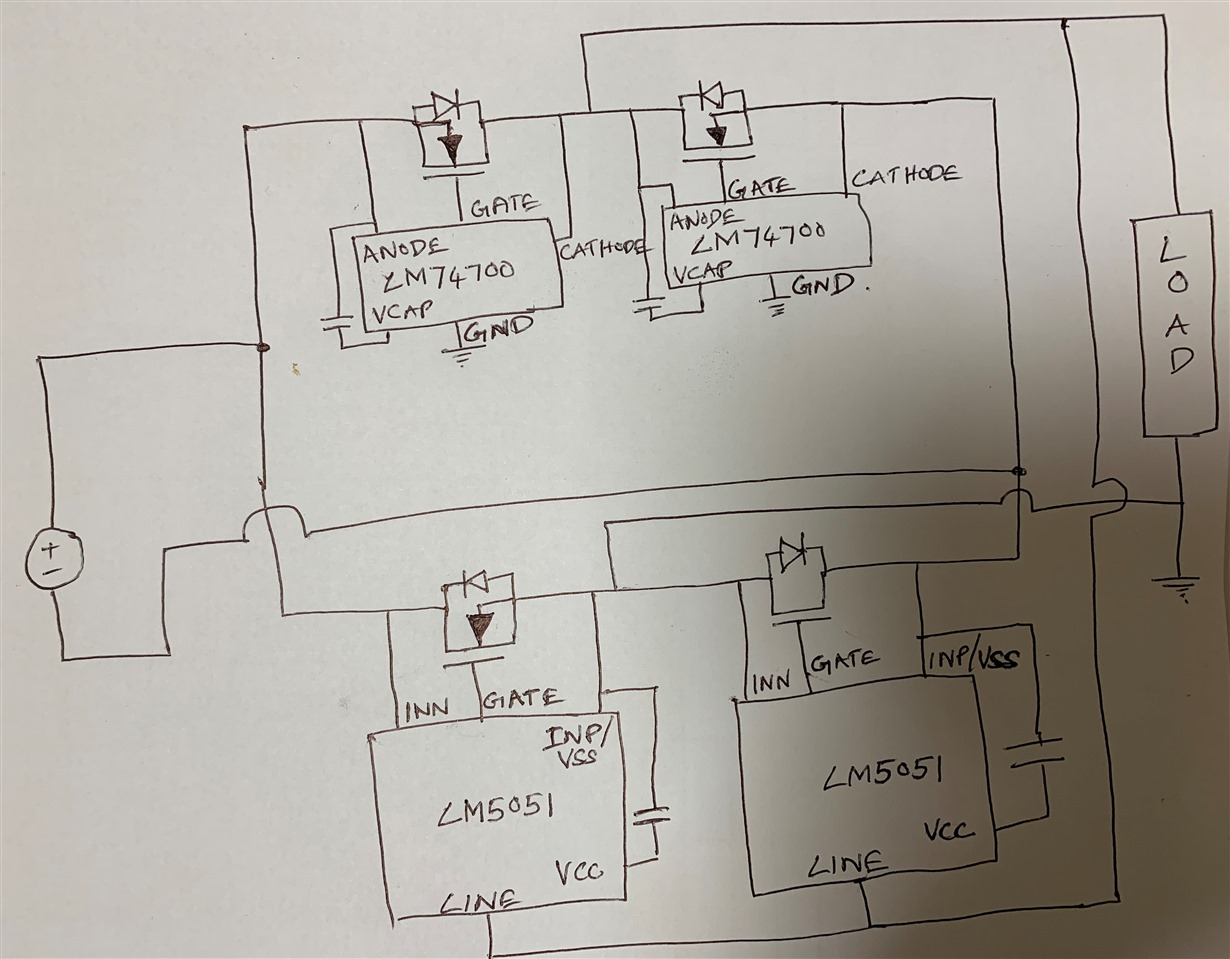Other Parts Discussed in Thread: LM5051
Hello,
I saw on a previous post involving Kari and Hiroshi that there was an circuit example using the LM74700 for full bridge rectification. I know there are some problems with the ground pin as the phases dip below ground. I'd love to see if there was a workaround for this. Could you please share the schematic?
Much appreciated.
Troy



